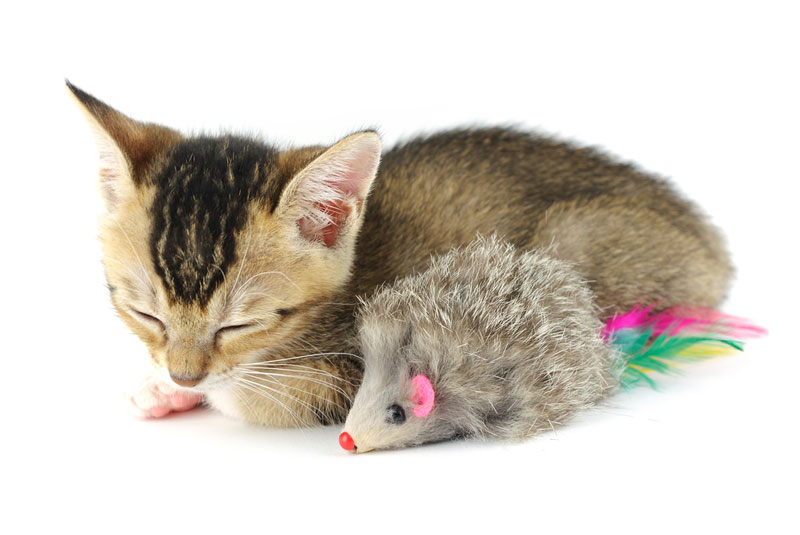Cat Overpopulation Spawning Novel Rescue Approach (Op-Ed)


Wayne Pacelle is the president and chief executive officer of The Humane Society of the United States (HSUS). This Op-Ed is adapted from a post on the blog A Humane Nation, where the content ran before appearing in LiveScience's Expert Voices: Op-Ed & Insights.
Every now and then the animal advocacy movement has an "aha" moment — when new information emerges or new thinking causes us to question long-held assumptions, or even how we approach the complex challenges facing animals in our society.
We had one such moment at The HSUS a few years ago, when, during the Hurricane Katrina crisis, we saw so many un-spayed and un-neutered dogs and cats in the Gulf Coast states. Rather than presume "pet-owner irresponsibility," we instead dug in to find out why — deploying researchers to conduct surveys and focus groups and to gather and examine data. What we learned from that research — notably that socioeconomics, resources and access to services were at the heart of the problem — ultimately formed the core principles behind our pioneering Pets for Life program. People in neighborhoods with high numbers of stray animals are as receptive as anyone else to responsible pet ownership and the importance of spaying and neutering. Giving them the tools to act on their beliefs is the key to better outcomes.
Our movement may be at the front end of another aha moment with regard to how we respond to the un-owned outdoor cat population. When these so-called "community cats" arrive in shelters — whether brought there by "nuisanced" or well-meaning neighbors — their fate is often predetermined, and it's not a good one. What's more, the volume of cats coming into shelters isn't enough to reduce the size of the cat population, and the only conclusion is that we aren't doing much to help curb nuisances, cruelty or predation on wildlife.
Dr. Kate Hurley, a veterinarian and the director of the Koret Shelter Medicine Program at the University of California Davis School of Veterinary Medicine, joined me and several other sheltering leaders on stage at this year's Animal Care Expo to take a deeper look at this situation — questioning whether the goals of animal shelters are met by the intake of otherwise healthy stray cats. (Dr. Hurley penned the cover story in the current edition of Animal Sheltering magazine and recorded a Maddie's Fund webinar on the same topic, which I recommend to you for further investigation.)
I asked Dr. Hurley and her colleague, Dr. Jennifer Scarlett, veterinarian and co-president of the San Francisco SPCA, to help me answer a few of the most common questions that have come up as animal advocacy organizations navigate toward a new paradigm for community cats — one that holds the potential to be better for cats, wildlife and people.
Wayne Pacelle: Though total numbers have gone down over the last 40 years pretty dramatically, we are still euthanizing too many healthy and treatable dogs and cats in our country. Euthanasia rates vary by region, but increasingly, there is a widening gap between dogs and cats, in terms of outcomes for them. Cats are dying in shelters in big numbers, and especially so as a percentage of intake of cats. What's behind this phenomenon?
Get the world’s most fascinating discoveries delivered straight to your inbox.
Jennifer Scarlett: When we look at statewide data in California from 1998 to 2010, we see a trend of dog intake going down and dog adoption and transfer to rescue going up. The result is a 22 percent drop in dog euthanasia over that period. For cats, their intake was slightly higher in 2010 with negligible change in adoption or transfer to rescue. So with more coming in and fewer leaving, and a euthanasia rate of around 70 percent, the situation has not improved. We've applied the same techniques for dogs and cats in shelters and what we're learning is that not only do we need to treat them very differently once they enter a shelter, but we also need to look at different methods for keeping healthy cats out of the shelter in the first place.
Kate Hurley: A lot of it likely has to do with ownership. The population of un-owned cats in the United States is estimated to be approximately the same size as the population of owned cats, yet historically shelter programs such as low-cost spay/neuter, public education and adoption programs have targeted animals with owners or those that could be placed into homes. Because the un-owned population of dogs is relatively small in the U.S., this strategy has been quite successful in many communities. However, for feral and un-owned cats, we need a different strategy.
WP: What shelter policies need to be revamped to turn this around?
JS: The vision for shelters must be to provide a temporary safe-haven for animals in need. The policy to get there is to balance our optional intake of animals (owner surrenders, healthy stray cats) with our ability to provide them with good care and positive outcomes.
KH: For years, shelters have struggled to control the un-owned cat population primarily through euthanasia. Now that we have better estimates of the size of the un-owned cat population, we realize that shelters have only been impacting a tiny fraction of the total population through euthanasia — not nearly enough to reduce the overall population size, not enough to protect public health, wildlife, reduce the cat population or serve any of the other goals we might have hoped to realize through this practice. Now that we understand this, shelters can set euthanasia aside as a tool to control cat populations and focus on other alternatives — most notably, shelter/neuter/return — where healthy un-owned cats that would not be candidates for adoption are sterilized, vaccinated for rabies, ear-tipped and returned to the same location where they were found. Shelters can also help community members find strategies to co-exist with cats peaceably, just as we do with other creatures such as raccoons and opossums that might make an unwanted appearance in somebody's back yard.
WP: Where do we start in making these changes, and what obstacles do you expect in trying to implement these ideas?
JS: There isn't a 'one-size fits all' solution. To begin, each shelter has to take an objective look at their capacity to provide positive outcomes for the animals that enter their facility. The common thread is to reduce intake, but the tactics for change can run the spectrum from managed intake to diverting all healthy cat intake to neuter and re-release, depending on the community. I believe the first obstacle to tackle is within our profession. Making the shift to control shelter populations at the front door may be a huge cultural change for some communities. Leaders who decide this is the best solution for their community have to be ready to invest a lot of work and communication to get their staff's buy-in, respond to the public's concern and be willing to work with local wildlife advocates. The good news is that results will be worth it.
KH: I agree with Dr. Scarlett. One of the biggest obstacles for me, and I suspect for many others — both within the sheltering profession and for animal lovers and advocates in general — will be getting past the idea that admission to a shelter is always the best option for a cat who is homeless or whose owner can no longer keep him or her. For so long, it was commonly felt that shelters had to take every cat presented, as soon as it was presented, regardless of the shelter's ability to provide humane care or ensure a good outcome. Anyone who has worked a summer in a shelter can tell you this is stressful for staff and volunteers, as well as cats! Instead, we need to consider each cat's unique circumstances and balance these with what is happening at each shelter on any given day. When admission of a cat would cause over-crowding, poor conditions for cats in the shelter, or result in euthanasia of the newly admitted cat or another already in the shelter, then cats, shelters and communities are better served by finding alternative solutions. This could range from simply scheduling an appointment rather than immediately admitting the cat; to admitting the cat for sterilization, vaccination and return to its habitat; to offering a community member or owner other alternatives to shelter intake, such as utilizing low-cost spay/neuter resources in the community, using non-lethal deterrents to resolve nuisance problems, behavioral counseling, neighbor mediation, or any number of solutions we can offer when systems are not overwhelmed.
Pacelle's most recent Op-Ed was "Gestation Crates Have No Place in U.S. Food Production (Op-Ed )" This article was adapted from "Are We Herding and Hurting Cats?," which first appeared on the HSUS blog A Humane Nation. The views expressed are those of the author and do not necessarily reflect the views of the publisher. This version of the article was originally published on LiveScience.



